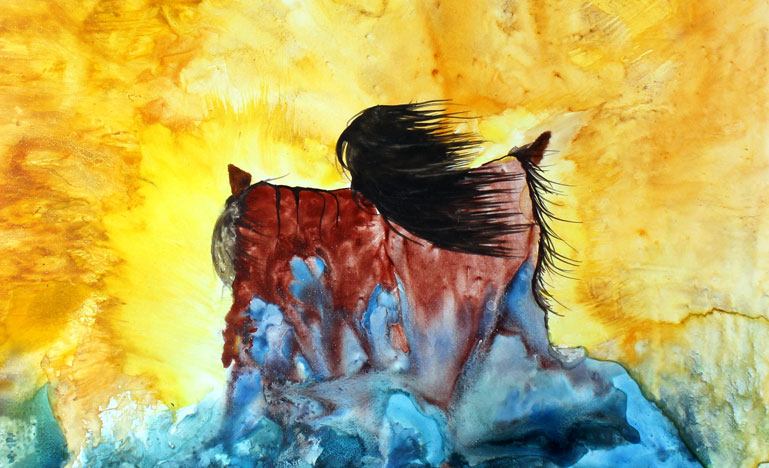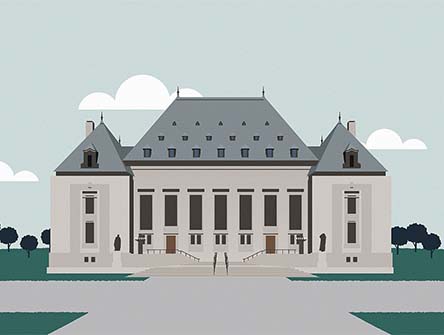Path to reconciliation
The CBA launches an online journey through Indigenous Canada.

The Canadian Bar Association recently launched an online educational program as part of its continued commitment to respond to the 2015 Truth and Reconciliation Commission’s Calls to Action.
Entitled The Path—Your Journey Through Indigenous Canada., the initiative was designed with the general public in mind, even though it is accredited of credits by law societies across Canada for continuing legal education purposes. Available in French and English, it should take about four hours to complete, says John Brown, Legal and Strategic Advisor, Indigenous Initiatives at McCarthy Tétrault in Toronto.
“Canadian lawyers should have basic cultural competency when it comes to the relationship between Canada and its Indigenous people,” says Brown. “I think it’s the obligation of every lawyer to understand this.”
The Path tells the history of Indigenous peoples and their relationships with European settlers, the British Crown and the Dominion of Canada, including the residential schools, the “Sixties Scoop,” the Truth and Reconciliation Report and the Inquiry into Murdered and Missing Indigenous Women and Girls. The program is made up of five online modules consisting of videos and quizzes.
The modules introduce participants to the three Indigenous peoples—First Nations, Inuit and Métis—recognized in the Canadian constitution. Some of the legal issues surrounding the Indian Act, treaties and Supreme Court of Canada rulings are investigated. Module 4, entitled “It’s the Law!” looks at understanding historical and modern treaties. The final module “presents some suggestions on how to work and communicate with Indigenous colleagues and partners and strengthen your relationships with Indigenous peoples.”
The Path “presents in a very culturally appropriate and meaningful way the history, culture, traditions and practices of Indigenous people,” says Brown. “It’s a history lesson told in many instances from the viewpoint of the Indigenous people. It incorporates testimonials and discussions and videos that paint a very different picture of the Indigenous people than the picture we’ve all grown up with.”
Many Canadians were deprived of this history lesson in the educational system, Brown adds. “The Path, in a nutshell, is trying to give people the opportunity to learn that in a quick way.” For those who want to investigate the issues more closely, there are links to resources at the end of each module. He adds that law societies have programs too, but “there’s nothing as comprehensive as this.”
The CBA first put together its response to the Truth and Reconciliation Report in 2015 and created a task force in 2018. The task force released its report in 2019 with a series of recommendations, one of which was to create resources to help lawyers and others to gain cultural competency. The Path was developed by NVision Insight Group Inc., a majority Indigenous-owned consulting company.
“We tried to find a balance to make the course interactive based on adult-learning principles, covering First Nations, Inuit and Métis coast to coast to coast,” says Jennifer David, senior consultant with NVision. Module 5 is the most practical, she adds, since it talks about “cultural traditions and difference in communication styles—things that you might experience when you go into Indigenous communities.” After taking The Path, “I can say with confidence you are absolutely more culturally aware.”
David hopes that those who take The Path “will go through the range of emotions, that they will be angry, they will be sad, they will be shocked, they will be amazed, and that they will come out at the end and feel comfortable and confident enough to be able to share what they’ve learned with others, to say now I know something about Indigenous history and Indigenous peoples in Canada.”
The Path provides an essential understanding of that history, says Brown. Lawyers who will be working with or for Indigenous peoples should consider The Path as a first step, then use it as a springboard to access further resources to help create and maintain meaningful relationships with Indigenous people going forward. “That’s really what this is all about, establishing and maintaining mutually respectful relationships.”
Brown has asked several lawyers in his office to do the course, “both Indigenous and non-Indigenous, and they’re all quite impressed with how broad it is in terms of the subjects and issues it covers and how beautifully it captures the Indigenous perspective.”

